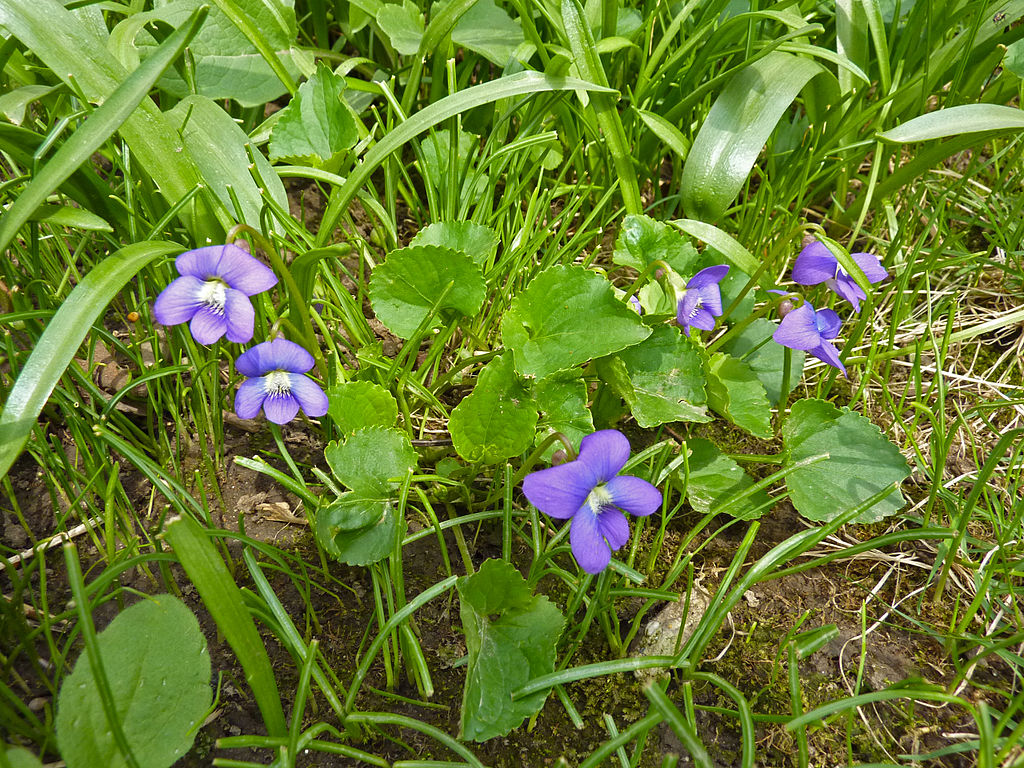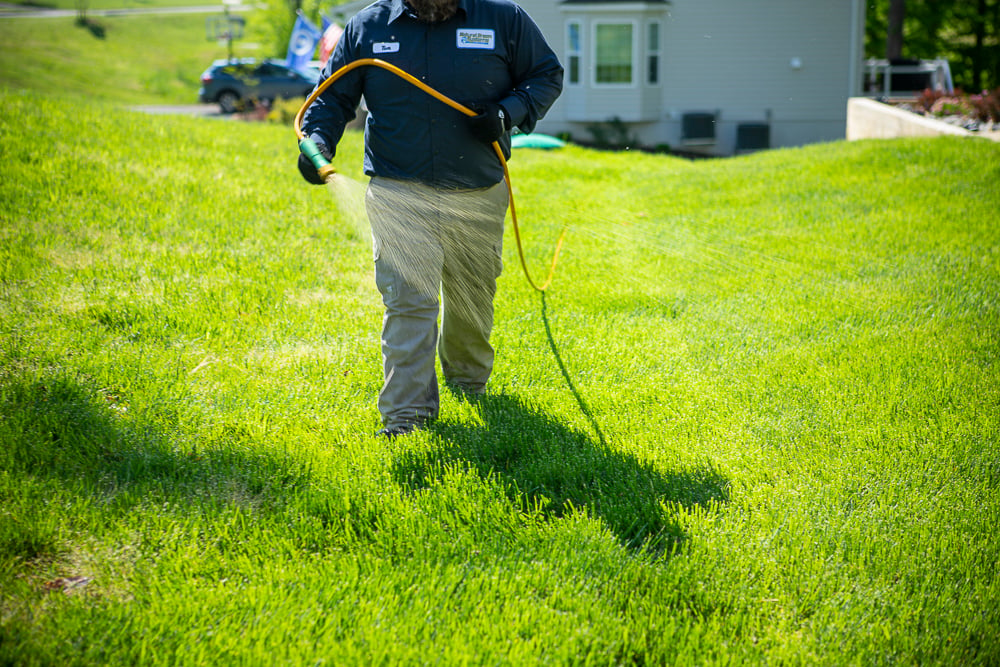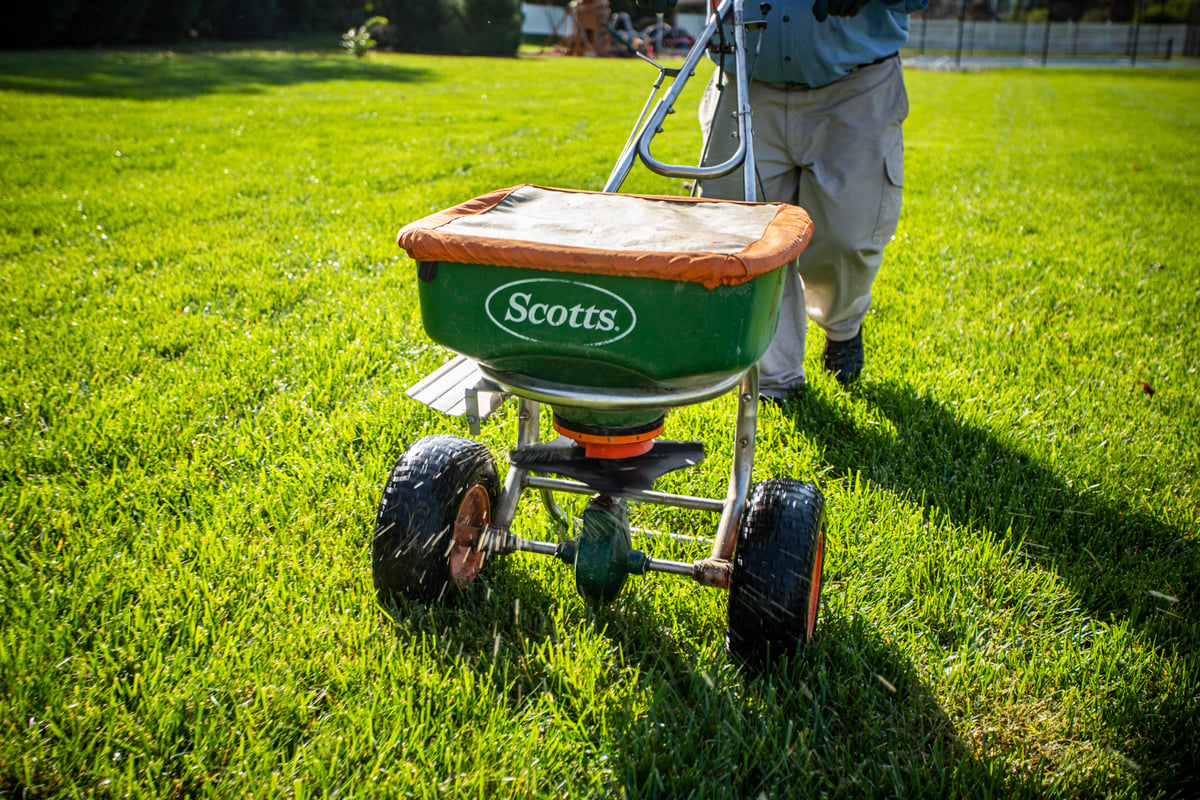How to Get Rid of Wild Violet Weeds in Your Maryland Lawn
If you have wild violets in your Maryland lawn, you’re likely getting more and more frustrated each year as you notice them slowly taking over.
These weeds sure are persistent. And if you think you’re trying everything humanly possible to get rid of them, and you feel like you’re failing, you’re not alone. Wild violets in grass are probably one of the worst weeds to control. What’s more is that traditional weed control methods don’t work on wild violets.
Let’s discuss this pesky weed more in detail and talk about ways you can combat it in your Maryland lawn.
A Closer Look at Wild Violets in Lawns
As broadleaf perennials, wild violets may be the prettiest weeds out there with their purple flowers, but they counter that trait by being super annoying once they invade your lawn.
Use This Lawn Weed ID Tool to Spot Weeds in Your Lawn
And once they root in your grass, they tend to crowd out good grass to make room for more of themselves. Not cool.
Obtaining wild violet control means understanding the weed you’re fighting and then using proper strategies to eliminate it.
What Do Wild Violets in Grass Look Like?
Known for its pretty purple flowers, but hated for its ease of growing in lawn areas and taking over turfgrass, wild violets in grass are perennial weeds with extensive root systems.
 These weeds grow under 2 inches in height so they stay tucked into your lawn. But their heart-shaped, scalloped leaves that range from ½-inch to 1½ inch stand out. Then they bloom with ¾- to 1-inch purplish-blue flowers, which make them pop out from the lawn even more.
These weeds grow under 2 inches in height so they stay tucked into your lawn. But their heart-shaped, scalloped leaves that range from ½-inch to 1½ inch stand out. Then they bloom with ¾- to 1-inch purplish-blue flowers, which make them pop out from the lawn even more.
Where Can You Find Wild Violets in Lawns?
Wild violets in grass will usually crop up in damp, shaded areas on your lawn.
But once they persist and spread, they can tolerate full sun conditions as well, making them tough to control.
What Makes Wild Violets So Tough to Control?
Wild violets in grass spread by creeping stems that root in the soil throughout the lawn.
This also makes their roots difficult to get if you were trying to pull them up by hand. If you try to grab them, the plants usually snap off of the roots, which actually encourages regrowth. This makes weeding by hand work against your efforts.
How to Get Rid of Wild Violets
Since wild violet is a prevalent problem in Maryland lawns, it can be tough to kill wild violets. Most common herbicides don’t effectively control these weeds.
 Battling wild violets requires a specialty herbicide. But timing is crucial to maximize control. Early spring or late fall control is best. If you try to tackle wild violets in the heat of the growing season, you won’t have as much luck since these weeds are tougher to control when they are flowering. You want to maximize herbicide use so it will be most effective versus waste product and make it harder for that weed to respond when it can actually work to your advantage.
Battling wild violets requires a specialty herbicide. But timing is crucial to maximize control. Early spring or late fall control is best. If you try to tackle wild violets in the heat of the growing season, you won’t have as much luck since these weeds are tougher to control when they are flowering. You want to maximize herbicide use so it will be most effective versus waste product and make it harder for that weed to respond when it can actually work to your advantage.
For this weed, you want to make sure you’re working with a local lawn care professional who is up-to-date on new products for tackling wild violets. An informed expert who understands weeds and what new products are available for their control will do a better job eliminating your toughest weeds.
A Healthy Lawn Can Also Help You With Wild Violet Control
In addition to proper wild violet control with specialty herbicides, you want to make sure your lawn is in the best position to fight all weeds, including wild violets.
You want to start by watering properly. Irrigation your lawn with 1 to 2 inches of water weekly. Early morning watering is typically best.
 Since thicker turfgrass yields fewer weeds, you want to fertilize regularly, as well as aerate and overseed in the fall. Basing your fertilization on soil test results will get you the best program specific to your lawn.
Since thicker turfgrass yields fewer weeds, you want to fertilize regularly, as well as aerate and overseed in the fall. Basing your fertilization on soil test results will get you the best program specific to your lawn.
Mowing at a 3- to 4-inch height encourages healthy lawn health and keeps lawn thick enough to reduce weed growth.
Stop Wild Violets in Your Maryland Lawn
Weeds are the worst. And a weed like wild violet in grass is a nuisance. You know it. We know it.
But if you’re seeing spots that don’t look right or random flowers popping up where they shouldn’t belong, you might have wild violets.
Proper lawn care and working with a lawn care service partner who knows how to handle difficult-to-control weeds can make a big transformation in your Central and Southern Maryland lawn.
Not sure if the weeds you're seeing are wild violets or what you can do to stop them from spreading? Call Natural Green. We tackle weeds all the time, and wild violets don’t scare us at all. We regularly test new selective herbicides to ensure we find ways to tackle your worst weeds and ensure your lawn looks amazing.
Are wild violets slowly taking over your lawn? We’d love to help. Get started today with a free quote. Together, we’ll prepare a customized plan for your Central or Southern Maryland lawn so you can make an educated decision and get rid of weeds for good.
Image Source: wild violets
If you have wild violets in your Maryland lawn, you’re likely getting more and more frustrated each year as you notice them slowly taking over.
These weeds sure are persistent. And if you think you’re trying everything humanly possible to get rid of them, and you feel like you’re failing, you’re not alone. Wild violets in grass are probably one of the worst weeds to control. What’s more is that traditional weed control methods don’t work on wild violets.
Let’s discuss this pesky weed more in detail and talk about ways you can combat it in your Maryland lawn.
A Closer Look at Wild Violets in Lawns
As broadleaf perennials, wild violets may be the prettiest weeds out there with their purple flowers, but they counter that trait by being super annoying once they invade your lawn.
Use This Lawn Weed ID Tool to Spot Weeds in Your Lawn
And once they root in your grass, they tend to crowd out good grass to make room for more of themselves. Not cool.
Obtaining wild violet control means understanding the weed you’re fighting and then using proper strategies to eliminate it.
What Do Wild Violets in Grass Look Like?
Known for its pretty purple flowers, but hated for its ease of growing in lawn areas and taking over turfgrass, wild violets in grass are perennial weeds with extensive root systems.
 These weeds grow under 2 inches in height so they stay tucked into your lawn. But their heart-shaped, scalloped leaves that range from ½-inch to 1½ inch stand out. Then they bloom with ¾- to 1-inch purplish-blue flowers, which make them pop out from the lawn even more.
These weeds grow under 2 inches in height so they stay tucked into your lawn. But their heart-shaped, scalloped leaves that range from ½-inch to 1½ inch stand out. Then they bloom with ¾- to 1-inch purplish-blue flowers, which make them pop out from the lawn even more.
Where Can You Find Wild Violets in Lawns?
Wild violets in grass will usually crop up in damp, shaded areas on your lawn.
But once they persist and spread, they can tolerate full sun conditions as well, making them tough to control.
What Makes Wild Violets So Tough to Control?
Wild violets in grass spread by creeping stems that root in the soil throughout the lawn.
This also makes their roots difficult to get if you were trying to pull them up by hand. If you try to grab them, the plants usually snap off of the roots, which actually encourages regrowth. This makes weeding by hand work against your efforts.
How to Get Rid of Wild Violets
Since wild violet is a prevalent problem in Maryland lawns, it can be tough to kill wild violets. Most common herbicides don’t effectively control these weeds.
 Battling wild violets requires a specialty herbicide. But timing is crucial to maximize control. Early spring or late fall control is best. If you try to tackle wild violets in the heat of the growing season, you won’t have as much luck since these weeds are tougher to control when they are flowering. You want to maximize herbicide use so it will be most effective versus waste product and make it harder for that weed to respond when it can actually work to your advantage.
Battling wild violets requires a specialty herbicide. But timing is crucial to maximize control. Early spring or late fall control is best. If you try to tackle wild violets in the heat of the growing season, you won’t have as much luck since these weeds are tougher to control when they are flowering. You want to maximize herbicide use so it will be most effective versus waste product and make it harder for that weed to respond when it can actually work to your advantage.
For this weed, you want to make sure you’re working with a local lawn care professional who is up-to-date on new products for tackling wild violets. An informed expert who understands weeds and what new products are available for their control will do a better job eliminating your toughest weeds.
A Healthy Lawn Can Also Help You With Wild Violet Control
In addition to proper wild violet control with specialty herbicides, you want to make sure your lawn is in the best position to fight all weeds, including wild violets.
You want to start by watering properly. Irrigation your lawn with 1 to 2 inches of water weekly. Early morning watering is typically best.
 Since thicker turfgrass yields fewer weeds, you want to fertilize regularly, as well as aerate and overseed in the fall. Basing your fertilization on soil test results will get you the best program specific to your lawn.
Since thicker turfgrass yields fewer weeds, you want to fertilize regularly, as well as aerate and overseed in the fall. Basing your fertilization on soil test results will get you the best program specific to your lawn.
Mowing at a 3- to 4-inch height encourages healthy lawn health and keeps lawn thick enough to reduce weed growth.
Stop Wild Violets in Your Maryland Lawn
Weeds are the worst. And a weed like wild violet in grass is a nuisance. You know it. We know it.
But if you’re seeing spots that don’t look right or random flowers popping up where they shouldn’t belong, you might have wild violets.
Proper lawn care and working with a lawn care service partner who knows how to handle difficult-to-control weeds can make a big transformation in your Central and Southern Maryland lawn.
Not sure if the weeds you're seeing are wild violets or what you can do to stop them from spreading? Call Natural Green. We tackle weeds all the time, and wild violets don’t scare us at all. We regularly test new selective herbicides to ensure we find ways to tackle your worst weeds and ensure your lawn looks amazing.
Are wild violets slowly taking over your lawn? We’d love to help. Get started today with a free quote. Together, we’ll prepare a customized plan for your Central or Southern Maryland lawn so you can make an educated decision and get rid of weeds for good.
Image Source: wild violets


